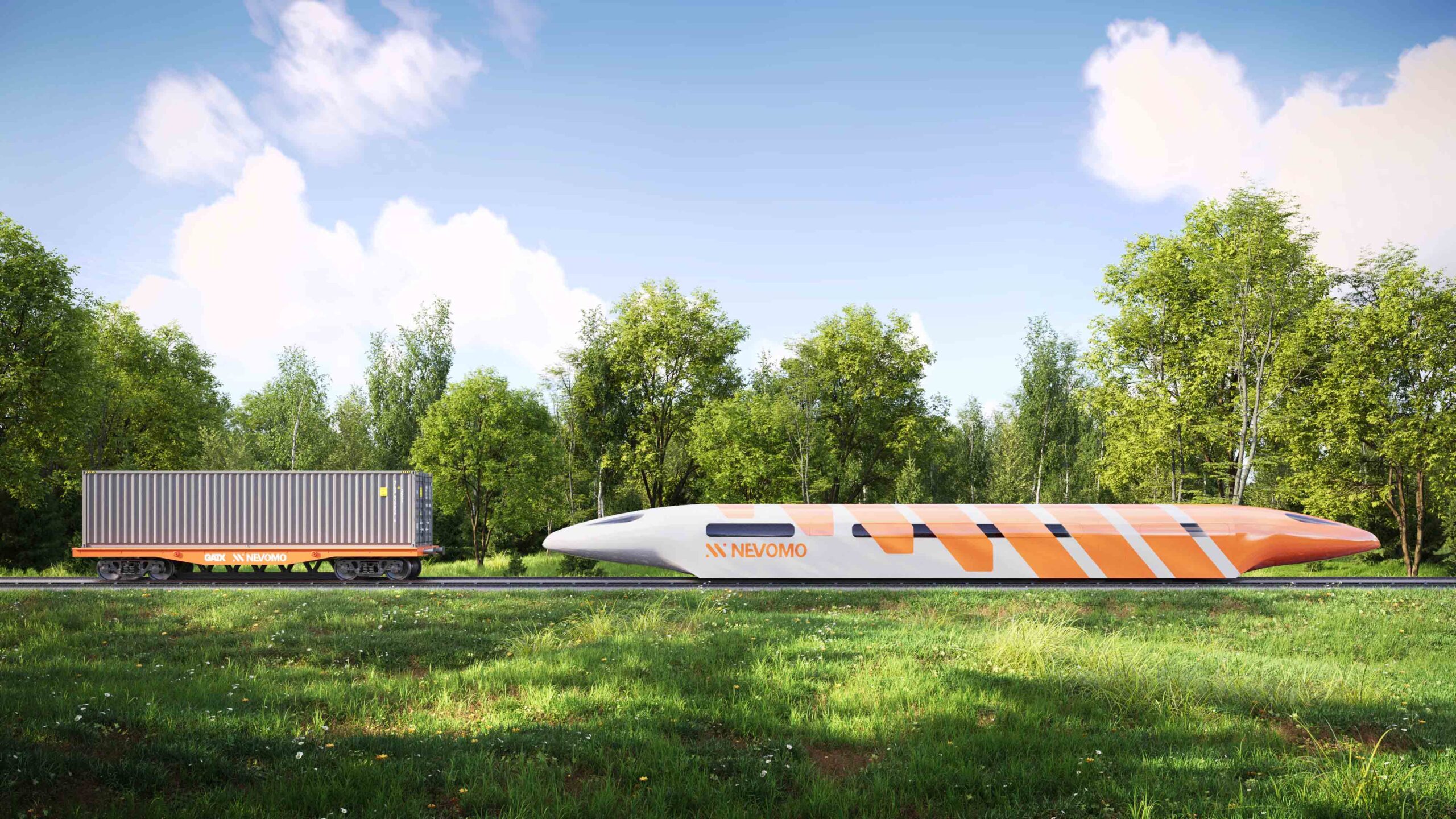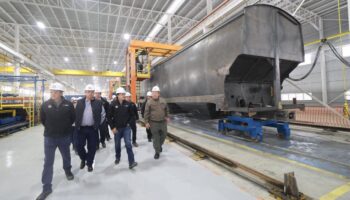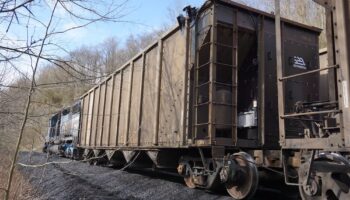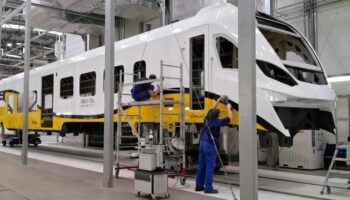Poland: During tests, a bogie with passive magnetic cushion by Nevomo successfully reached a speed of 135 km/h on a 720 m test track near Nowa Sarzyna. The plans of Nevomo extend to entering the freight market in cooperation with the GATX leasing company. Earlier, the large-scale research project, MaDe4Rail, of which the Polish start-up is a part was launched. With the European Commission’s funds, the project will study the feasibility of creating high-speed maglev systems in Europe.
As Nevomo reported last week, it tested a 6 m long bogie weighing 2 tonnes which began levitating at just over 70 km/h having risen 2 cm above the rails. It took only 11 seconds to accelerate from 0 to 100 km/h. The company claims the tests demonstrated stable levitation and magnetic guidance on the railway infrastructure.
Today other companies offer active maglev solutions that require a separate expensive infrastructure and direct power supply to electromagnets of both the vehicle and the tracks. Nevomo came out with a radically different solution, MagRail. With this passive technology, levitation is the result of the movement of a maglev train.
Nevomo’s technology provides for the modification of existing railway tracks and rolling stock. A linear motor stator installed between the rails and its motor and magnets on a bogie interact, and the vehicle starts or stops. Two levitation beams on the sides of the stator and outside the rail track lift and stabilise the car.
Testing of a MagRail passive magnet cushion platform on a test track near Nowa Sarzyna. Source: Nevomo/youtube
The Polish start-up was founded in April 2017 by students from the Warsaw University of Technology. The first MagRail 1:5 demonstration model was unveiled in 2019, and a year later its testing began. Already €28.5 mln have been invested in the technology: €5.5 mln of Nevomo’s capital and €23 mln in the EU grants.
Nevomo sees its first commercial MagRail version in freight transportation already in 2024. This May, the start-up signed an agreement with a major player in the freight car leasing market, GATX. Its freight car bogies will be equipped with components of MagRail Booster for linear motors and tested in Nowa Sarzyna. MagRail Booster is attractive in many ways, but especially in allowing autonomous movement of individual cars or small trainsets without a locomotive in “last mile” areas.
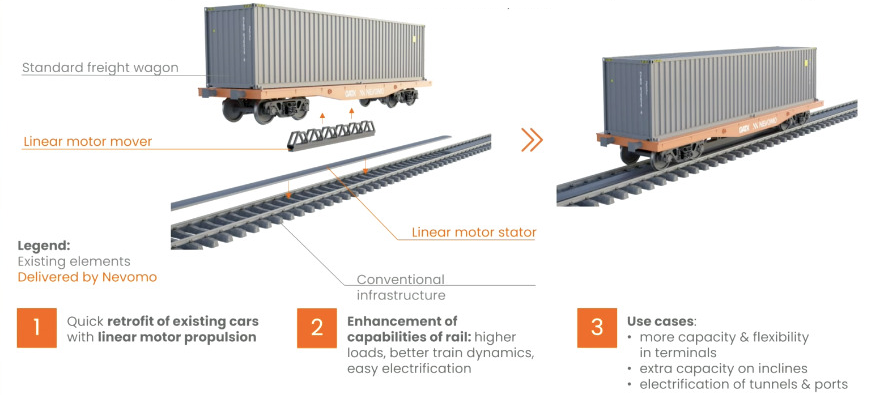 MagRail technology for freight transportation (enlarge). Source: Nevomo
MagRail technology for freight transportation (enlarge). Source: Nevomo
According to Sebastian Kaluza, Nevomo’s product development director, the start-up is considering implementing its technology at RFI, an Italian railway infrastructure manager, SNCF, a French national operator, and Duisport, a German logistics service provider. Thus, in June 2021, Nevomo signed a memorandum of understanding with RFI on a feasibility study of MagRail. Looking ahead, Nevomo hopes to develop rolling stock capable of reaching 550 km/h. The upgrade of existing high-speed rail lines for such speeds would cost about €9–10 mln/km, as Polish media cite Nevomo’s presentation.
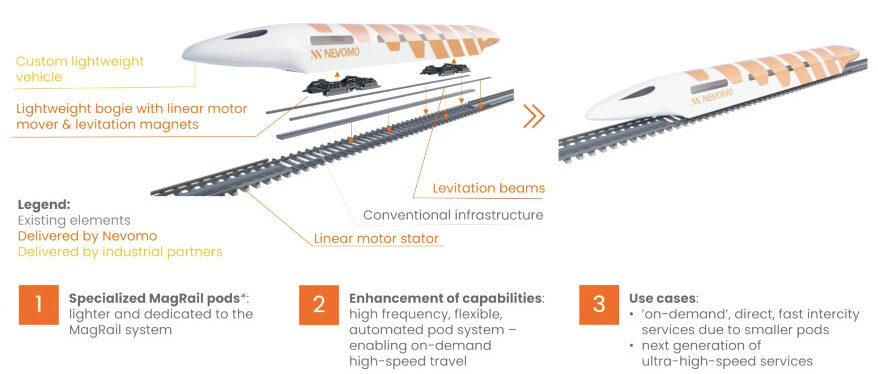 MagRail technology for passenger transportation (enlarge). Source: Nevomo
MagRail technology for passenger transportation (enlarge). Source: Nevomo
Europe was stuck with maglev development and implementation in the early 2000s, while China, Japan, and South Korea became the leaders of the technology’s development in recent years. This July saw some progress when participants of the European research project MaDe4Rail gathered for the first time to study the feasibility of integrating high-speed maglev systems into the existing railway infrastructure on the continent. Sixteen European partners from eight European countries joined to implement the project: operators, engineering companies, universities, and research centres. Coordinated by RFI, the €2.5 mln project will be partly — €1.5 mln — funded by the European Commission under Europe’s Rail initiative which brings together major national and rolling stock manufacturers, among others. The implementation of the project will take 12 months.





